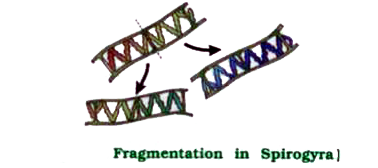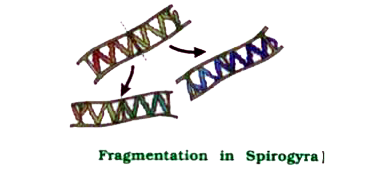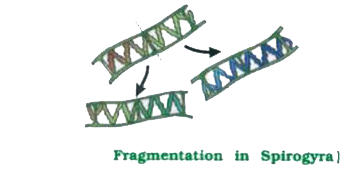Search for a pond with greenish water. Collect some of the green fibres from the water. Put the fibres in a petridish and wash them clean with water. Put one of the fibres in a drop of water on a glass slide and spread it out straight. Put a cover-slip over the slide and observe under a compound microscope.Solution in Marathi
Step by step video & image solution for Search for a pond with greenish water. Collect some of the green fibres from the water. Put the fibres in a petridish and wash them clean with water. Put one of the fibres in a drop of water on a glass slide and spread it out straight. Put a cover-slip over the slide and observe under a compound microscope. by Biology experts to help you in doubts & scoring excellent marks in Class 9 exams.
Updated on:21/07/2023Topper's Solved these Questions
Similar Questions
Primary consumers are directly dependent on _______.
View SolutionActivity 1: Take a conical flask and collect the water in it from a pond having stagnent water and aquatic plants. Add some wheat grans and aquatic plants to it. Keep it for 3-4 days so that wheat grains and plants will decompose. Early in the morning on fourth day, take a glass slide and put a drop of that water over it. Carefully, put a cover-slip on that drop and observe under compound microscope.
View SolutionActivity 1: Take a conical flask and collect the water in it from a pond having stagnent water and aquatic plants. Add some wheat grans and aquatic plants to it. Keep it for 3-4 days so that wheat grains and plants will decompose. Early in the morning on fourth day, take a glass slide and put a drop of that water over it. Carefully, put a cover-slip on that drop and observe under compound microscope.
View SolutionTo observe filamentous algae under microscope. Apparatus : Microscope, slide, coverslip. Materials : Glycerine, pond water, blotting paper. Procedure : rarr Collect water from a lake or pond that appears dark green and contains filamentous structure. rarr Put one or two filaments on a slide. Put a drop of glycerine on the filaments and cover it with a coverslip. rarr Observe the slide under a microscope. State the example of filamentous organism.
View SolutionTo observe filamentous algae under microscope.
Apparatus : Microscope, slide, coverslip.
Materials : Glycerine, pond water, blotting paper.
Procedure :
→ Collect water from a lake or pond that appears dark green and contains filamentous structure.
→ Put one or two filaments on a slide.
Put a drop of glycerine on the filaments and cover it with a coverslip.
→ Observe the slide under a microscope.

Can you identify different tissues in the filaments ?
View SolutionTo observe filamentous algae under microscope.
Apparatus : Microscope, slide, coverslip.
Materials : Glycerine, pond water, blotting paper.
Procedure :
→ Collect water from a lake or pond that appears dark green and contains filamentous structure.
→ Put one or two filaments on a slide.
Put a drop of glycerine on the filaments and cover it with a coverslip.
→ Observe the slide under a microscope.

Why is filament of spirogyra green in colour ?
View SolutionTo observe filamentous algae under microscope.
Apparatus : Microscope, slide, coverslip.
Materials : Glycerine, pond water, blotting paper.
Procedure :
→ Collect water from a lake or pond that appears dark green and contains filamentous structure.
→ Put one or two filaments on a slide.
Put a drop of glycerine on the filaments and cover it with a coverslip.
→ Observe the slide under a microscope.

Is spirogyra a prokaryotic or eukaryotic organism ?
View SolutionTo observe filamentous algae under microscope. Apparatus : Microscope, slide, coverslip. Materials : Glycerine, pond water, blotting paper. Procedure : rarr Collect water from a lake or pond that appears dark green and contains filamentous structure. rarr Put one or two filaments on a slide. Put a drop of glycerine on the filaments and cover it with a coverslip. rarr Observe the slide under a microscope. How do spirogyra reproduce asexually ?
View SolutionActivity 1 : Take a conical flask and collect the water in it from a pond having stagnent water and aquatic plants. Add some wheat grans and aquatic plants to it. Keep it for 3-4 days so that wheat grains and plants will decompose. Early in the morning on fourth day, take a glass slide and put a drop of that water over it. Carefully, put a cover-slip on that drop and observe under compound microscope.
View SolutionCollect different water samples of fresh water. Mount them on a glass slide and observe under a compound microscope. Try to identify the organisms which are visible under it.
View SolutionTake a few drops of water from a pond. Spread on a glass slide and observe through a microscope. Do you find tiny organisms moving around?
View SolutionActivity-based question : Activity : Prepare a temporary mount of one drop of pond of water on a glass slide. Observe it under low power and high power microscope.
View SolutionCollect a cup of greenish pond water in our surroundings. Put a drop of water on the slide. Keep it under microscope and observe. What would you find out ? Draw rough
View SolutionLet us take a glass slide with a drop of water on it. Using an ice cream spoon gently scrape the inside surface of the cheek. Does any material get stuck on the spoon ? With the help of a needle we can transfer this material and spread it evenly on the glass slide kept ready for this. To colour the material we can put a drop of methylene blue solution on it. Now the material is ready for observation under microscope. Do not forget to put a cover-slip on it. What do we observe? What is the shape of the cells we see?
View SolutionCollect water samples from a pond, well, bore well.Keep then separately. Put a drop of water on a slide. Keep a cover-slip, on it. Observe. under the microscope.
Draw what you have observed. Describe the shapes of the microorganisms!
View Solution
